Joint Classification: Structural and Functional Types in Human Anatomy
1/34
There's no tags or description
Looks like no tags are added yet.
Name | Mastery | Learn | Test | Matching | Spaced |
|---|
No study sessions yet.
35 Terms
Fibrous joint
Bones held together by dense connective tissue
Cartilaginous joint
Bones joined by cartilage
Synovial joint
Bones joined by ligaments with fluid-filled joint cavity separating bone surfaces
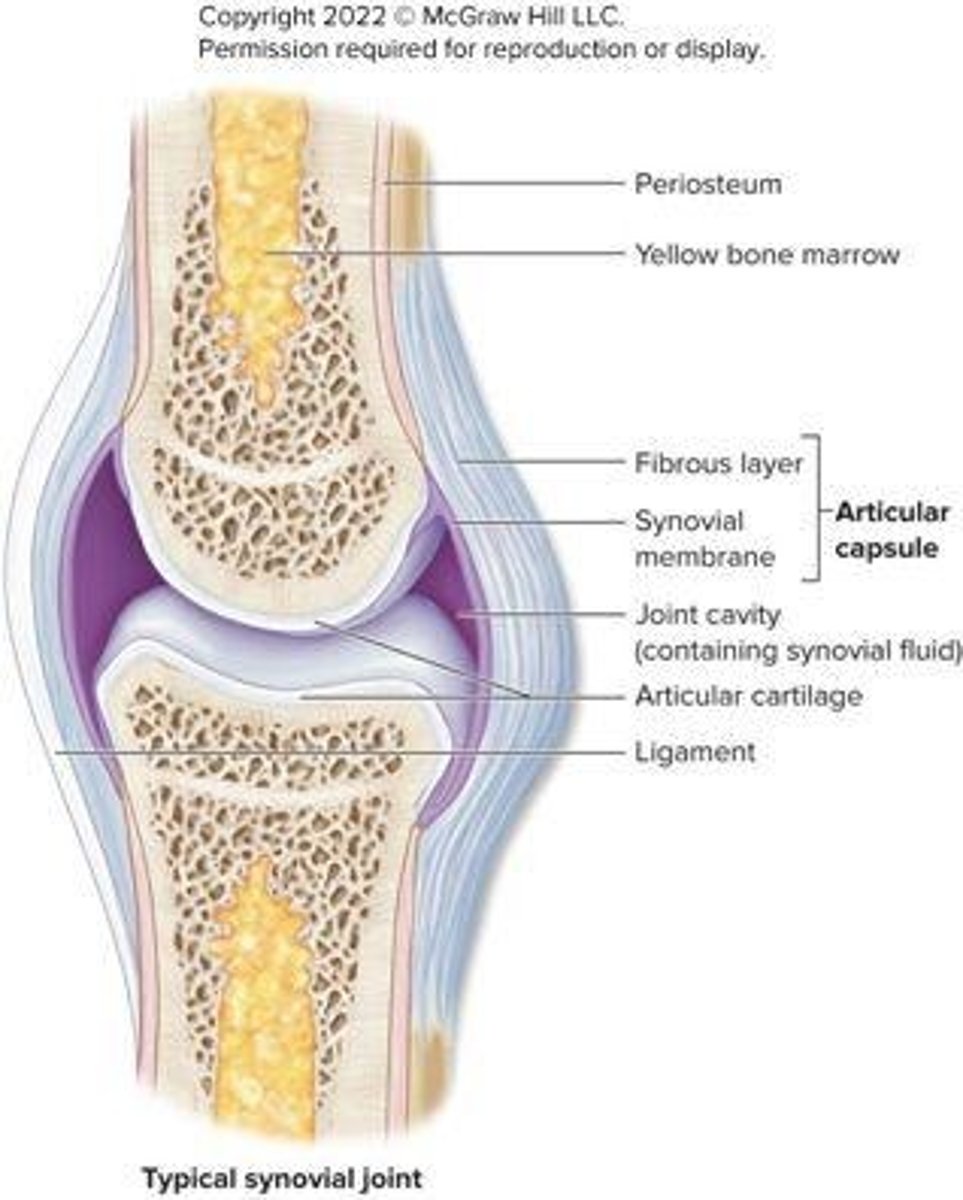
Synarthroses
Immobile joints, can be fibrous or cartilaginous joints
Amphiarthroses
Slightly mobile, can be fibrous or cartilaginous joints
Diarthroses
Freely mobile joints, All synovial joints
Temporomandibular joint (TMJ)
Head of mandible articulates with temporal bone
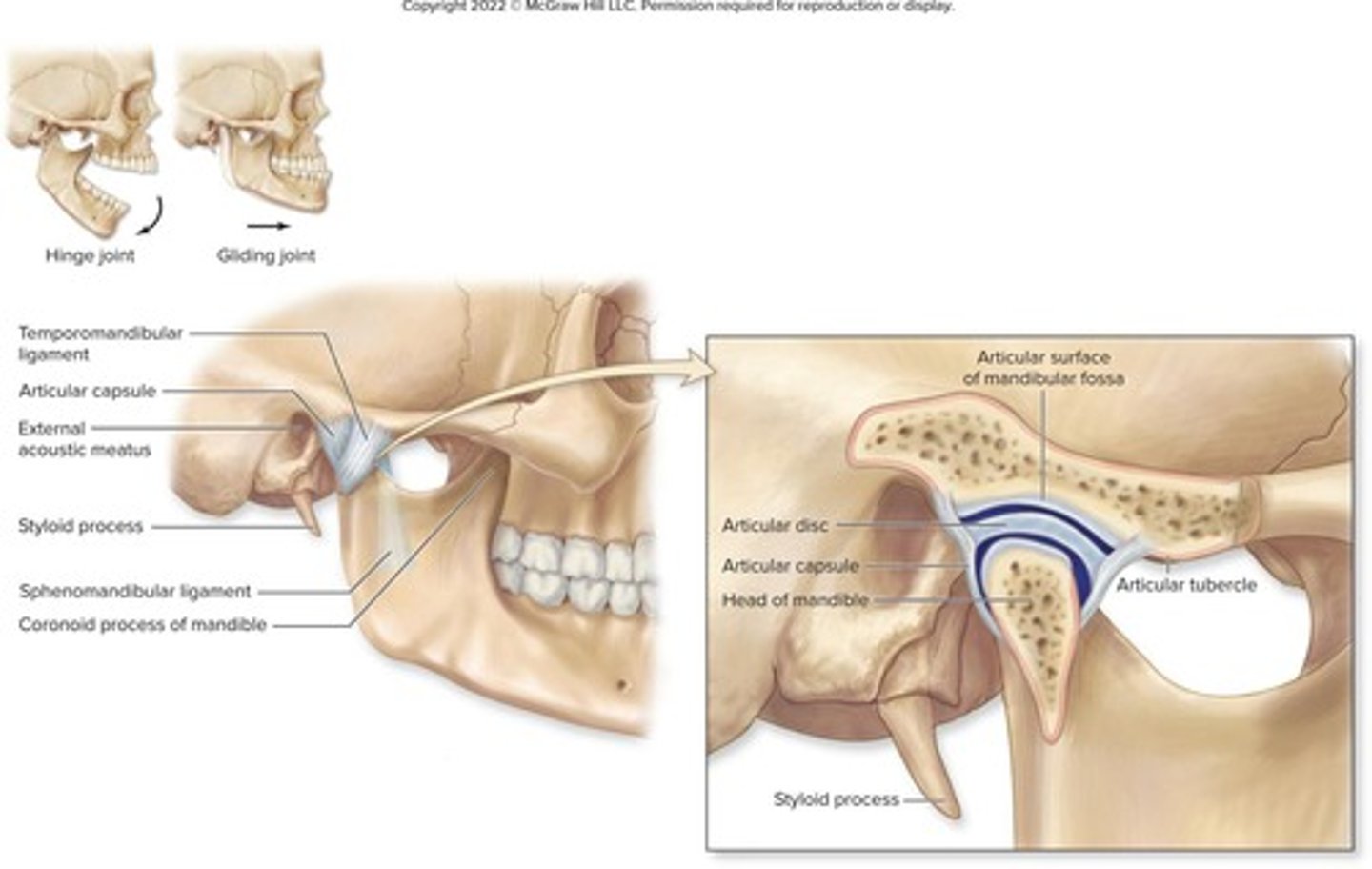
TMJ mobility
Only mobile joint between bones in the skull
Articular capsule
Has loose articular capsule that surrounds joint
Range of motion
Promotes extensive range of motion
Articular disc
Thick pad of fibrocartilage
Temporomandibular Joint
A joint that connects the jaw to the skull.
Sternoclavicular Joint
A saddle joint with a fibrocartilaginous articular disc, allowing elevation, depression, and circumduction of the clavicle.
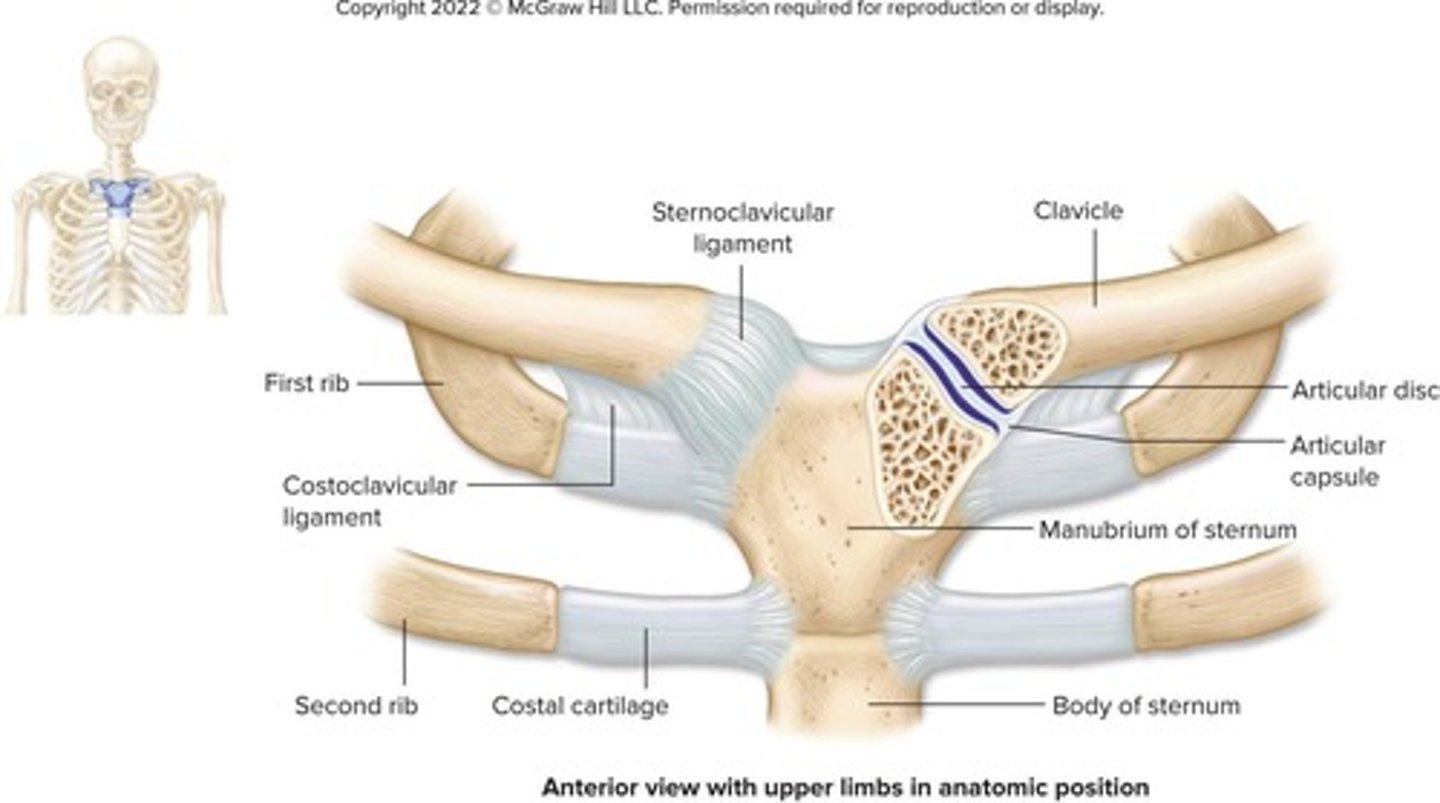
Acromioclavicular Joint
A plane joint formed from the acromion and lateral end of the clavicle.
Glenohumeral Joint
A ball-and-socket joint that allows a wide range of motion in the shoulder.
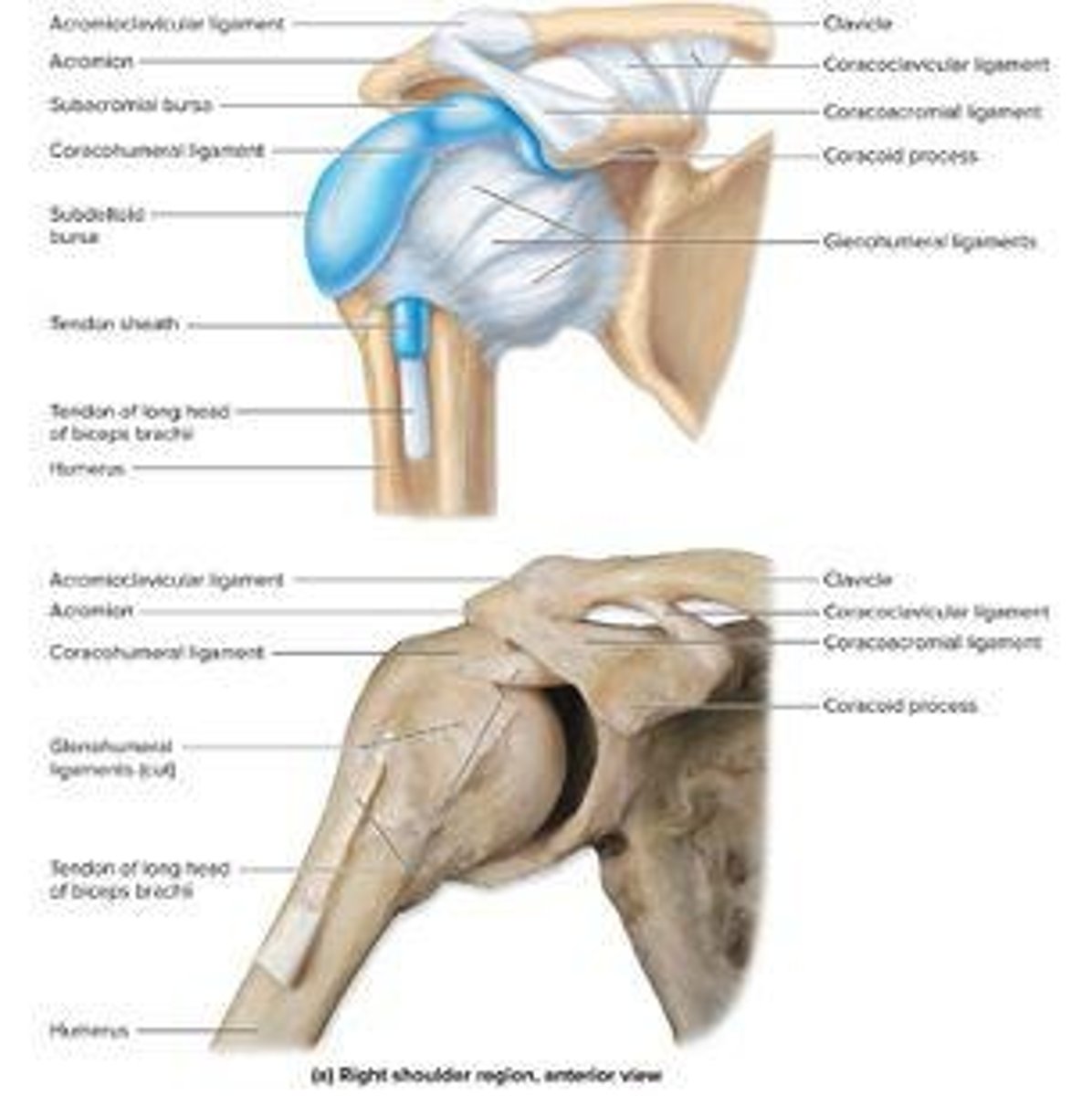
Hip Joint
A ball-and-socket joint that connects the femur to the pelvis.
Knee Joint
A hinge joint that connects the thigh bone to the shin bone.
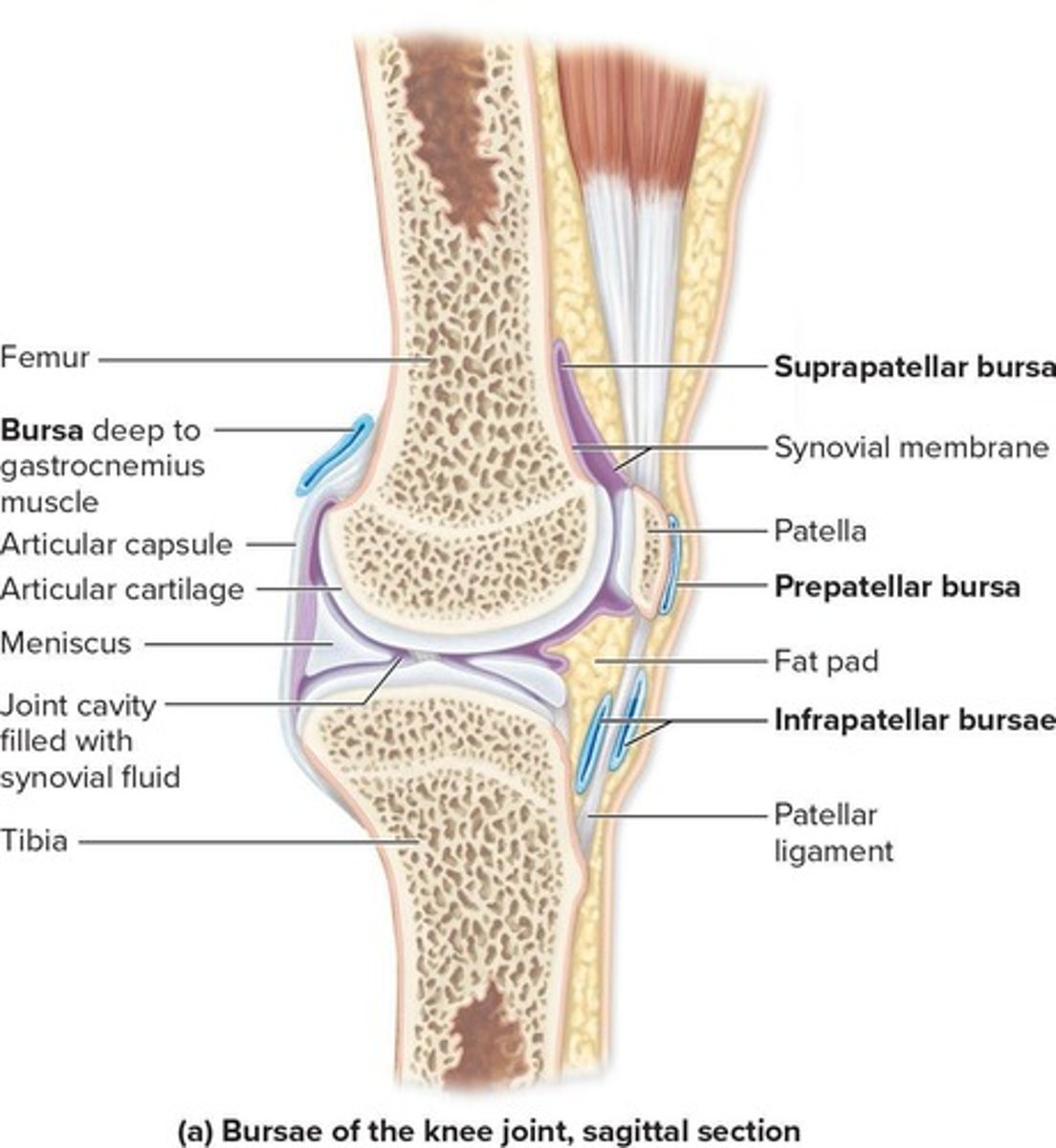
Tibial collateral ligament injury
Injury occurring when the leg is forcibly abducted.
Fibular collateral ligament injury
Injury occurring when the medial side of the knee is struck.
ACL injury
Injury that occurs when the leg is hyperextended.
PCL injury
Injury that occurs when the leg is hyperflexed.
Meniscus injury
Injury due to trauma and/or overuse.
Unhappy triad
Injury of the tibial collateral ligament, medial meniscus, and ACL, occurring due to a lateral blow to the knee that abducts and laterally rotates the leg.
Talocrural joint
Highly modified hinge joint permitting dorsiflexion and plantar flexion.
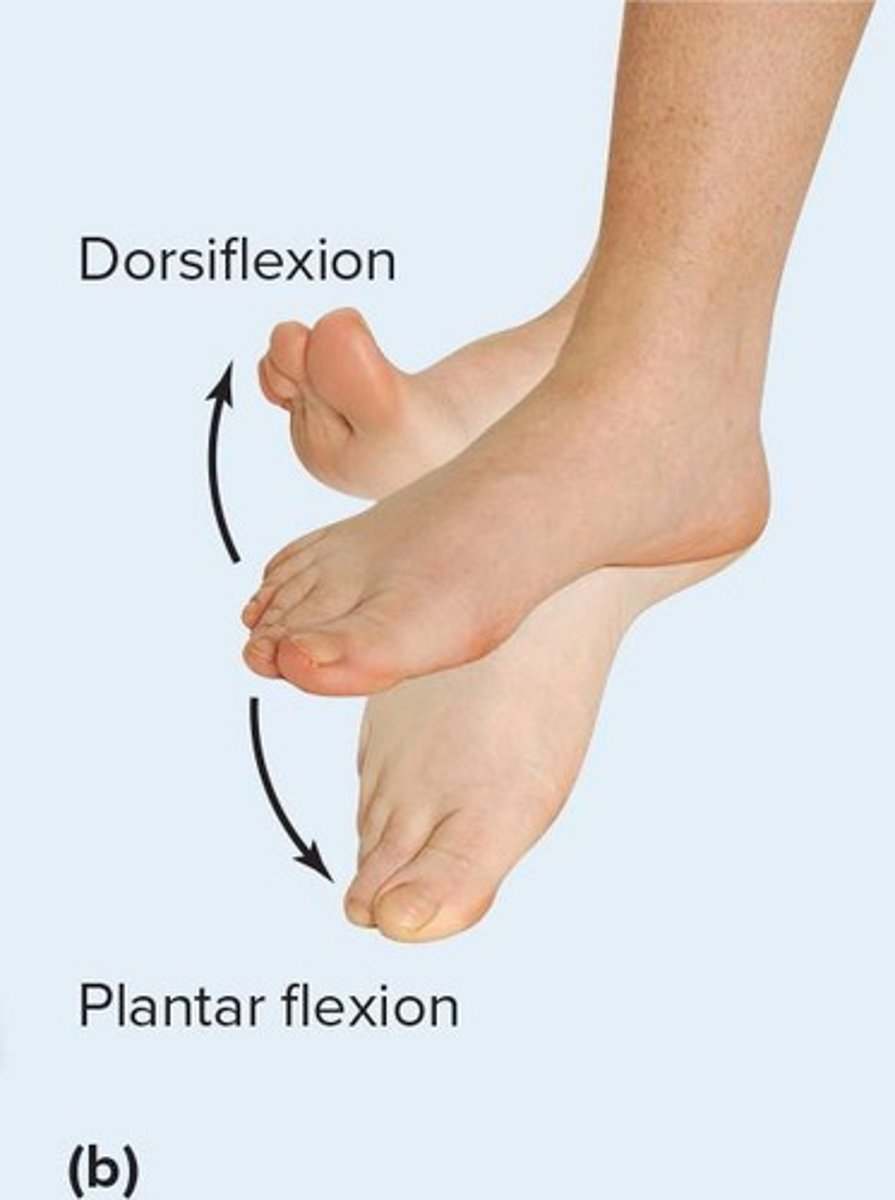
Talocrural joint articulations
Includes two articulations within one articular capsule: between distal end of tibia and talus, and between distal end of fibula and lateral aspect of talus.
Sprain
Stretching or tearing of ligaments without fracture or dislocation.
Pott fracture
Occurs with over eversion; medial malleolus avulsed off of tibia (fracture) and talus moves laterally to fracture fibula.
Development of joints
Joints start to form by sixth week of development.
Fibrous joints development
Mesenchyme differentiates into dense regular connective tissue.
Cartilaginous joints development
Mesenchyme differentiates into fibrocartilage or hyaline cartilage.
Synovial joints development
Laterally placed mesenchyme forms articular capsule and supporting ligaments.
Arthritis
Group of inflammatory or degenerative diseases of the joints.
Gouty arthritis
Typically seen in middle-aged or older males due to increased levels of uric acid.
Osteoarthritis
Degenerative joint condition in older individuals due to wearing down of articular cartilage.
Rheumatoid arthritis
Seen in younger to middle-aged adults, often women; autoimmune disorder starting with synovial membrane inflammation.